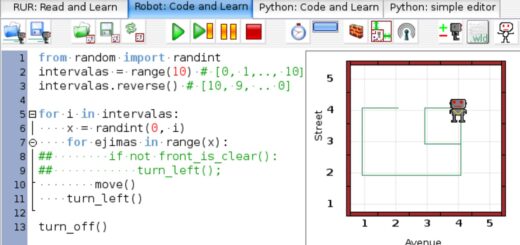A Comprehensive Guide To Python For Image-Based Data Mining
Python For Image-Based Data Mining is a process of extracting/copying useful data or information from images in a machine-readable or editable form.
The data can be text, special characters/symbols, charts and graphs, infographics, etc. Individuals and businesses can use the extracted data for their benefit.
However, today in this blog we will discuss image-based data mining that only deals with text extraction. There are multiple methods that you can use in this regard.
One method is through an OCR tool that can automatically extract text from image with maximum accuracy. Another method is through Python.
The second method of image-based data mining requires following the right steps. In this comprehensive guide, we will be explaining every essential thing that you need to know in order to perform image extraction through Python.
How You Can Perform Image-Based Data Mining Through Python
Below are the steps that you need to follow to perform image-based data mining with the help of Python. It is important to note that each step discussed below is necessary.
So, it is recommended to efficiently follow each step otherwise you will run into errors.
1. Install The Libraries:
The very first step that you need to do is to install the essential libraries of Python that will perform data mining from images.
The libraries you will need to download, and install are as follows:
- Pytessaract: This is an Optical character recognition tool for Python that will scan and recognize the text that the image contains. To install Pytessaract, you just have to type “pip install Pytesseract,” in your code editor, and done.
- OpenCV/CV2: This is another library of Python that will also play its part in image-based data mining. This library is responsible for image preprocessing.
- NumPy: It is also a library that is used to perform a wide variety of mathematical variations. So, if your image contains text mathematical numbers or equations, then this library will be beneficial.
- Scikit-image: Scikit-image is an image-processing library that is loaded with algorithms for segmentations, geometric transformations, etc.
- Matplotlib: This is the final that you need to install in your system.
Instead of installing all these libraries separately, it is recommended to install the latest version of Python. It will include all the necessary libraries.
2. Load The Required Libraries:
From this step, the actual image-based data mining will start. You have to load the libraries in your coding editor or software you are using. Obviously, you will need to write the code, which we have written below.
| import cv2 # OpenCV for image processing import NumPy as np # NumPy for numerical computations from skimage import io, feature, segmentation # Scikit-image for image processing and analysis import matplotlib.pyplot as plt # Matplotlib for visualization |
3. Load And Preprocess The Images:
After loading the required data-mining libraries, you then have to write code that will load the image from local storage and preprocess it to remove all kinds of distractions, noise, etc. from the picture.
The code you need to write is below:
| # Read an image image = cv2.imread(“path/to/image.jpg”) # Convert to grayscale if needed gray = cv2.cvtColor(image, cv2.COLOR_BGR2GRAY) # Apply preprocessing techniques (e.g., resizing, noise reduction, contrast enhancement) resized_image = cv2.resize(gray, (256, 256)) |
4. Feature Extraction:
The next step is featuring extraction in which the Python libraries you have installed will compare the text that the image contains with its database of words. It will later extract the words and phrases that have a successful match with the database.
Apart from this, the feature extraction will also involve resizing and segmenting the input image.
| # Extract features based on your task edges = feature.canny(resized_image) # Edge detection segments = segmentation.slic(resized_image, n_segments=100) # Superpixel segmentation texture_features = feature.local_binary_pattern(resized_image, 8, 1) # Texture analysis |
5. Choose Feature Representation:
You also need to choose the right feature representation. The feature representation is crucial because Python algorithms cannot directly scan and analyze images in pixel-based format. Instead, the algorithms require meaningful numerical representations that capture the key image characteristics.
However, it is important to note that you should choose feature representations according to your specific data-mining task or the characteristics of the image that you are using for text extraction. Below is the code displaying multiple feature representations that you can choose from.
| # Choose a representation method (e.g., histograms, feature vectors) edge_histogram = np.histogram(edges.ravel(), bins=256)[0] texture_histogram = np.histogram(texture_features.ravel(), bins=256)[0] |
6. Feature Aggregation:
You only need to perform this step if you want to extract text from multiple images at once. In this case, you have to write or add the following code.
| # Calculate statistics (mean, median, standard deviation) across multiple images mean_edge_histogram = np.mean([edge_histogram1, edge_histogram2, …], axis=0) |
7. Perform Data Mining Task:
In this step, you will give a command to Python to start performing data mining tasks. Remember, there are multiple data mining tasks including clustering, classification, and image retrieval. You have to separately write code for each task.
Code for clustering
| from sklearn.cluster import KMeans kmeans = KMeans(n_clusters=4) clusters = kmeans.fit_predict(texture_features) |
Code for classification
| from sklearn.svm import SVC model = SVC() model.fit(training_features, training_labels) predictions = model.predict(test_features) |
Code for image retrieval
| # Use similarity measures (e.g., Euclidean distance, cosine similarity) distances = np.linalg.norm(query_features – database_features, axis=1) |
So, this was the step-by-step procedure that you need to follow to perform image-based data mining with the help of Python. But remember, if your written code contains a single error, you will definitely run into an error.
Final Thoughts
Image-based data mining involves extracting all the data/information from images in an editable format. For maximum accuracy in this mining process, people make use of Python. In this article, we have steps along with the Python code that you need to follow in order to perform image-based data mining through Python, hope you will find this article helpful.





